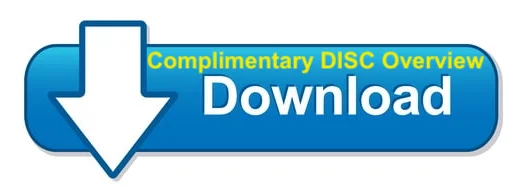Coaching People: 6 Key Points to Prepare for a Post-Pandemic Pivot

What does post pandemic future hold for managers and their teams? A new normal brings a new mindset and in a post-pandemic pivot, many may be looking to change jobs (or managers).
During the pandemic, I found it interesting to observe my eldest son’s experience with the pivot to remote work prior to and following the achievement of his undergraduate degree. In his internship prior to graduation he loved the onboarding, a virtual welcome that included participation from the CEO, as the organization found new ways to do things with the global ushering-in of a remote-work culture. He has now into his 2nd role in a year within the same financial services company and has yet to meet any colleagues in person. This is about to change.
Impact of Remote Work
What is the impact on organizations and their now-digital workers? Studies indicate that many are found the adjustment challenging. A study by Telus International found that 75% of respondents “struggled at work due to anxiety caused by the COVID-19 pandemic and other recent world events,” and a full 80% said they would consider leaving their jobs for one that better balanced remote work and mental health.Research conducted by mental health tech firm Ginger found that almost 70% of workers feel more stressed than at any other time in their careers. Clearly, in this evolving work-from-home culture, everyone is facing challenges, especially in the area of communication. The regular stream of conversation between coworkers, and between managers and staff, ordinary discussions about how things are going in the organization—all have been muted. So, it becomes an even more critical management responsibility to communicate what is unseen and what is taking place, to give clarity and transparency of expectations and metrics, and to listen to team members.
Leading Through The Pandemic Pivot
With remote working, managers who lead teams are tasked with a cultural pivot in the way they lead people. From Zoom meetings to onboarding new talent, some managers are adjusting well, but many are failing. Those who are less successful are responsible (often unknowingly) for the disengagement of team members, leading to a decline in performance. In a post-pandemic world, these managers and organizations will almost certainly lose talent to the teams and leaders who have mastered the people pivot. To avoid losing staff to stress and overall dissatisfaction, leaders need to master the post-pandemic pivot in building resilient teams. Here are a few tips to keep your people engaged and productive, despite the distance.
6 Keys to Mastering the Post-Pandemic
1) Start with Personal Wellness Recognize that as a leader, the first person you lead is yourself. You can’t lead from a place of poor health and personal exhaustion. Especially post-holidays, many health and wellness experts encourage regular exercise, adequate rest, and healthy eating while limiting alcohol and sugar intake for positive mental and physical health. TIP:Determine the best time in your routine to build in some regular exercise. Personally, if I don’t get out early in the morning, I run the risk of not working out at all. There is less opportunity for interruption at 6 am (check out The 5 AM Club, a book by Robin Sharma). Perhaps set up a regular socially-distanced walk or run with a friend or neighbour for accountability. |  |
2 ) Engagement begins with Empathy: Balance People Performance with Profit
A study published in Harvard Business Review found that “empathetic companies outperform their more callous counterparts by 20 percent. When people feel understood themselves, they’re more receptive to others’ concerns—and team cohesion, collaboration and innovation tend to follow suit.” This last year has required the prioritization of people before productivity and profits in the short term. People perform better when they feel listened to and supported.
TIP: Enhance active listening skills by asking great questions. If your direct report is more introverted and you need to discuss significant issues, consider emailing them questions for discussion a day in advance of your online meeting. They will appreciate the preparation time to make a virtual dialogue more productive.
3) Stop Managing; Engage by Coaching and Communicating
TIP: Coach team members to be solution-oriented. When they have a problem to overcome, don’t rush to solve it for them. Encourage them to bring up 2–3 potential solutions to any challenges they present. Get into the habit of asking, “What do you think we should do with that? How can you solve that?” Be the leader that practices collaboration vs dictatorship. Developing a team culture that embraces and effectively navigates change together ensures transferable success through to post-pandemic times.
4) Build Trust with Empowerment
In support of a culture of superior remote work practices, Siemens CEO Roland Busch shared their two guiding principles: 1) Focus on outcomes rather than time spent in the office, and 2) Trust and empower your employees. For some work cultures, this may already be a big leap. In his book The Culture Connection, my friend Marty Parker makes the point that for the organizations that get it right, “Culture is a competitive advantage.” Some cultures will adapt and thrive in this shift to remote work, while others will have significant talent turnover. |  |
TIP: Building on point 3 above—empowering staff in problem-solving is a display of trust that enhances engagement. Your role is to bridge the gap between the performance metrics of the organization’s “what” and the staff’s evolving need for pandemic flexibility in determining the “how” of getting the job done. Find the balance of holding them accountable to established outcome metrics while coaching them to be creative and innovative in taking ownership of the “how” in their solutions. Inculcate the habit of asking (can you think of 3 ways you can expedite that?) vs. telling them. Your engagement and performance scorecard results will be directly related to how well you do this.
5) Avoid Cookie Cutter Management
Learn your team members’ unique communication styles.Remember each team is made up of different members who have different communication styles, different work preferences, and different management needs. Moreover, everyone has different stress triggers as they navigate the pandemic. Some prefer more interaction, while others are fine to work from home methodically in seclusion. What may create stress for one may be preferred for others. It will be important for you to reflect on the behavioural dynamics of your team members and allow for some adaptation. |  |
In short:
- Get to know your own style first. (your communication style, pace, how you come across to others etc)
- Then, get to know your people.
- Adapt as needed and invite their unique proposals for how and when they prefer to interact to achieve their needed work outcomes.
TIP: Using psychometric profiles such as DISC can help to accelerate your understanding of team members' styles. This proactive step reduce the conflict, stress, and mismanagement that comes from a lack of understanding style differences (see XLTeamwork.com).
6) Nurture Passion and Creative Fun
In his book Passion Capital, Paul Alofs makes the case that the greatest asset an organization has as a competitive advantage is the engaged passion of staff. At a time when office real estate assets are often sitting empty, it is the people and talent that organizations are depending on to continue to achieve organizational objectives. Passion Capital expressed as a formula in the book is shown as: Passion Capital = Energy + Intensity + Sustainability. During the pandemic, these factors are all challenged. Looking after and engaging your greatest asset—your people—is critical. |  |
TIP: Be intentional about encouraging their wellness and creative about noticing people in times of accomplishment and then expressing gratitude.Things like a personal handwritten note mailed to their home, or an electronic gift card for a catered meal or house-cleaning, can go a long way during these chaotic times. Build in some fun, too. Find out what engages your team and unleash some fun on the job. Competition? Virtual team cocktails at the end of a busy week?
In the end, it’s important to remind ourselves, organizations don’t achieve results—people do. Starting with yourself, stay well, and let’s get our people through this together.
 |
 | As Chief @ XLTeamwork.com Chuck is a Creative business leader/writer/husband/dad/real estate investor. Passionate about leadership, faith, family, entrepreneurship, and helping organizations understand and leverage their talent. Visit www.XLTeamwork.com for more information. \ |
